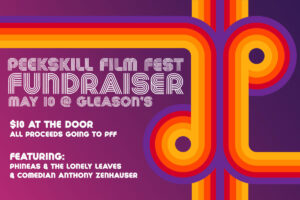It’s nearly summer and the light, air and landscapes are achingly beautiful. If you have the soul of an artist and the work schedule of a lawyer, sales clerk or perhaps nurse / mom / wife / chauffeur / cook / housecleaner, etc., maybe you can find the time for photographic expeditions that will enable you to make paintings a little bit at a time in the comfort of your home or in a weekly art class.
Advantages of working from photos:
Things don’t change.
Trees don’t gain or lose leaves, unobstructed views don’t suddenly get cut off by a van pulling in front of them, people in mid-step will stay in mid-step for 50 years or more. Children will stay children just as long. You don’t have to sacrifice toes to frostbite in order to paint a snow scene. For novices, working from photos simplifies the process of composition. You skip the challenging stage of accurately translating three dimensions into two, and you can take twenty varying pictures of the same scene and choose the best one. Your equipment is light. When I paint on location I need to make several trips to and from the car for a full set-up including chair and shade umbrella. Years ago when I used to carry my things on the bus I was limited to shady locations with a chair or bench already there. A lightweight camera gives you freedom and mobility.
Disadvantages:
There are still people who recognize that painting without a mechanical aid is a significant skill and give credit accordingly. However, there have been great painters who’ve used a camera (e.g. Degas) or camera obscura (before plates or film were invented, it temporarily projected a traceable image on a surface, and Vermeer is believed to have used one). There are contemporary artists working from photos, whose work is collected and shown in museums; for me, though, the ones who work only from photos make paintings of photos rather than of the subjects of the photos, and that is very different and, I think, not as good as what Degas and Vermeer did with their images. But I never say never. If possible, though, painting on location allows you to live with your subject for a long period of time. The speed and ease you sacrifice can give an unmatched aesthetic experience. The scene fills your world instead of being on a small piece of paper. People come by who may be part of the scene, such as homeowners or their neighbors if you’re painting a house, kayakers or other river experts if you’re painting the Hudson. Those who are very enthusiastic about my painting sometimes volunteer to pose for me, and they really add to the work. The best aesthetic experiences I’ve ever had were the result of spending hour after hour, day after day capturing two different houses on canvases. The first was in Dobbs Ferry, on lower Main Street; I was walking past a scene I had painted from across the street months before, and it was now a dark, icy, quiet winter night and I was the only one on the street, on my way somewhere. Suddenly I felt that I was moving through my painting, having crossed the street into the scene I had observed so carefully for so long. It was a delightful feeling and one I would never willingly trade for speed. The second time I had just finished a house portrait, again after many sessions of deep concentration on the scene from across the street. When the homeowner invited me inside for the first time I had the sweet sensation that this time I was walking into my painting as I’ve often wished I could walk inside a Vermeer or a Monet.
Techniques for using photos:
1. Take many photos at different times of day, in different weather, from different angles and pick the best ones. Get someone to drive you around the area or take the bus and photograph from the window as well as getting out and walking around the most attractive areas.
2. After you’ve chosen your spot, take one exposure set for the most brightly lit areas and another for the darkest shadows. If you’ve got a good
digital camera you may be able to skip this, but a film camera has a much lesser ability to perceive a wide range of tones than does the human eye. Paint has that wide range, in the right hands.
3. Take close-ups of details from the same angle as your main shot. You may be able to skip this and get quality enlargements of details within one photo. Take photos from other angles if your view of something is blocked by a car or tree. If it’s a car, try to come back on a Sunday or other day when there might be fewer cars.
4. Once you’re ready to paint, an easy way to transfer your image from photo to canvas is to grid them both. Start with a photo approximately 8 x 10, decide what size canvas you want, and make sure your photo has the same proportions. A 16 x 20 canvas will be like your 8 x 10 photo; but if you have your heart set on an 18 x 24 canvas, for example, you’ll have to modify your image to fit. Then mark the halfway and quarter points on photo and canvas and you’ll have an easy time sketching your image.
5. Bring your work-in-progress to the scene from time to time and compare it with the real thing.
There are many paintings waiting to happen in Tarrytown, Sleepy Hollow, Irvington and the surrounding areas. Just as Monet created many works at Giverny, in our towns many different compositions can be created with changes in angle, light, time of day, season, people vs. no people, cars vs. no cars. Even after observing and painting the river for nine years, I still see new effects at times. Recently I was driving west on Benedict Avenue and when the river came into sight I saw in it long horizontal gold strips. I didn’t have time to capture that fleeting effect, but I know the river has plenty more surprises for me in the future.
A note to people who love traditional art: please speak up if you want contemporary artists to be able to continue working in this form. The art world that controls funding has seized on the avant-garde with its conceptual art and in-your-face attitude as what we should value and protect. We are told that traditional art is not “newsworthy” and won’t get people to spend money. My experience painting in public tells me that a wide variety of people are still enchanted to see life made into art, but we painters often don’t make great business people, and being cut off from much of the funding causes us hardship, which is not really romantic or motivating as it sometimes is in the movies. So if you’re involved with a university or museum or gallery in any way at all, please speak up and don’t be cowed by the insistence that anyone who disagrees with the direction of contemporary art is stupid or cruel. More about this in future articles.






